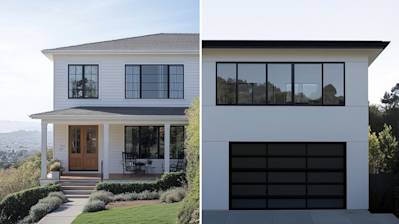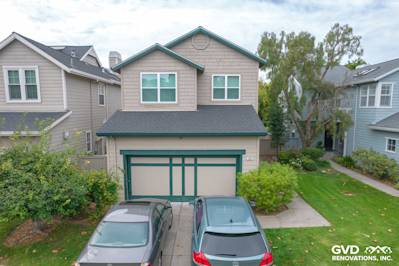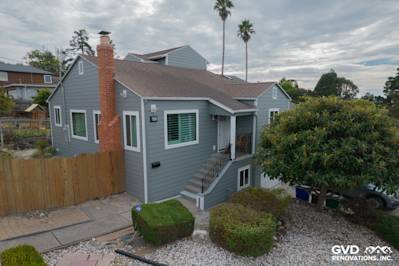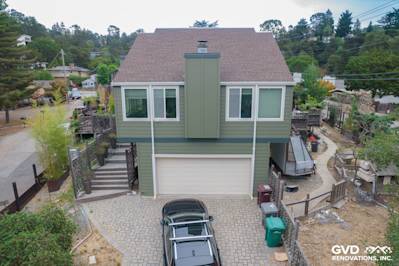The comfort and coziness of a home during chilly winter days play a significant role in our well-being. However, many homes lose their warmth due to heat loss, leading to high heating costs and a less comfortable environment. Welcome to your complete guide for reducing home heat loss, brimming with comprehensive details on why heat loss occurs and effective ways to prevent it.
Understanding the Mechanics of Home Heat Loss
Instead of jumping straight into the solutions, it’s absolutely vital to first wrap your head around the concept of heat loss. Invading your comfort zone during cold spells, heat loss is essentially the heat that escapes from your house when it's cold outside. More technically, it's the transfer of heat from inside your house to the outside world.
Keeping your home warm during the winters involves a constant battle against heat loss. When you artificially warm the air inside your house using different heating elements, nature attempts to restore equilibrium. This results in heat flowing out, causing your heating system to work harder, leading to higher energy costs.
Main Contributors to Home Heat Loss
- Doors and Windows: Almost 15-25% of heat loss in many homes is a result of draughts through doors and windows.
- Walls and Ceilings: Around 25-35% of heat escapes through uninsulated walls, while approximately 25% of heat is lost through the roof.
- Floors and Vents: Nearly 10-15% of heat loss is through uninsulated floors and ventilation.
Knowing these main contributors, it’s about time we explored solutions to curtail home heat loss.
Heat Loss Prevention: Why Insulation Outshines
When it comes to heat loss prevention, insulation is a heavyweight champion. It doesn't only just minimize heat transfer from inside to outside, but it saves you a significant amount on heating costs. The correct insulation reduces the load on your heating system, prolonging its life and efficiency.
Wall Insulation
Invest in high-quality wall insulation to prevent approximately 35% of your heat loss. Companies offer two types of insultation - interior and exterior. Both have different benefits including noise reduction, elimination of cold spots and saving on space.
Roof and Loft Insulation
Since heat rises, it makes sense to invest in roof or loft insulation. It allows your home to retain more heat, especially on icy nights, ensuring you're cozy when it matters the most.
Floor Insulation
Insulating your floors is often overlooked, but it adds an additional layer of comfort to your home. Besides the comfort aspect, a nice warm floor means overall lower heating costs.
Window and Door Insulation
Seal your windows and doors with high-quality insulation to maintain indoor temperature. Say goodbye to chilly draughts and hello to cozy winter nights.
Additional Techniques to Minimize Heat Loss
Don't undermine the power of small changes. In addition to insulation, there are other ways you can help to prevent heat loss from your home:
- Using thermal curtains during winter
- Draughtproofing around windows and doors
- Plugging gaps around floors and skirting boards
- Installing a chimney draft excluder when not in use
Adding these helpful measures to your insulation efforts compounds your heat retention capabilities.
Upgrade Your Boiler for Increased Efficiency
Often, an old, inefficient boiler can be a key cause of significant heat loss. Modern boilers come with condensing technology that captures and reuses heat from waste gases to heat your home, minimizing heat loss and chopping your heating bills.
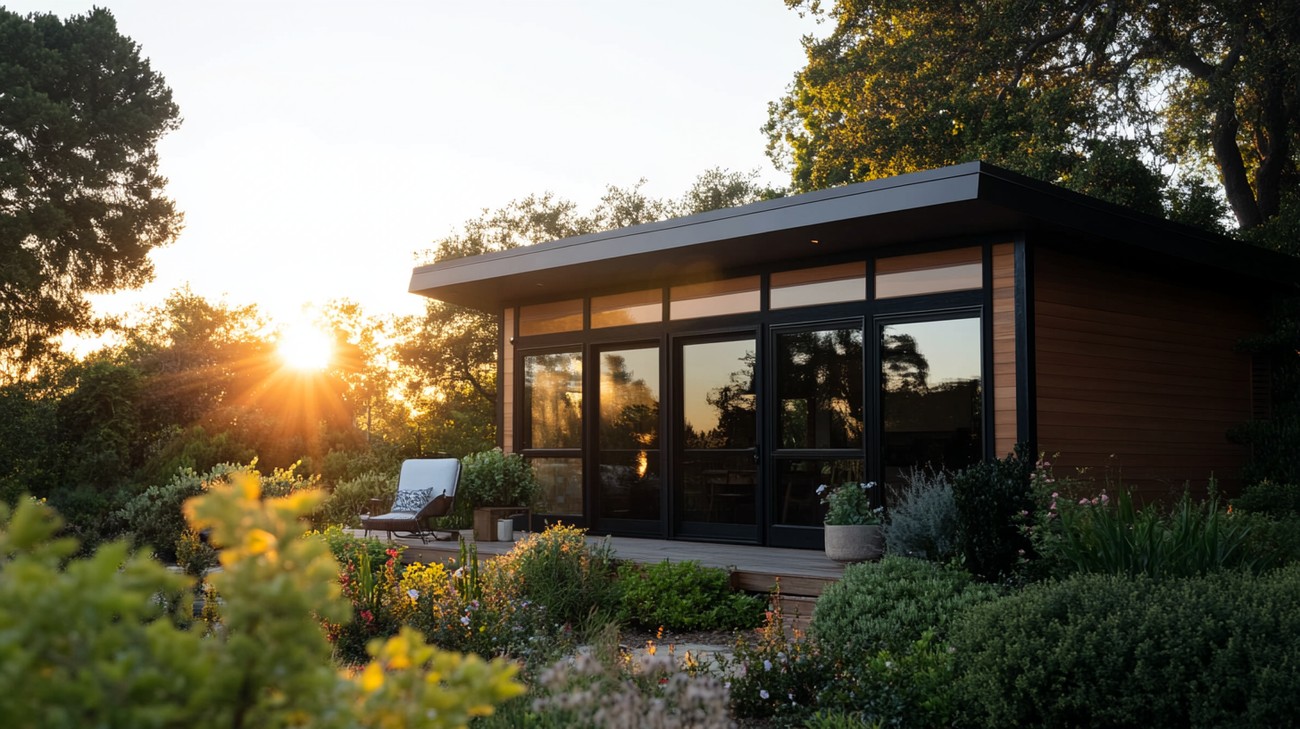
Frequently Asked Questions about Reducing Home Heat Loss
Can home decor contribute to reducing home heat loss?
Yes, your home décor can contribute significantly to reducing heat loss. Using heavy curtains for your windows for instance can prevent cold drafts from entering your home. Similarly, using rugs on hard floors can also provide insulation and reduce heat loss.
What is the role of windows in reducing home heat loss?
Windows play a significant role in home heat loss. Improperly sealed or single-glazed windows can allow a lot of heat to escape from your home. To prevent this, consider investing in double-glazed windows or, alternatively, using window insulation film. Utilizing thick curtains can also play a role in reducing heat loss through windows.
Can insulation contribute to reducing home heat loss?
Absolutely. Proper insulation is among the most effective ways to reduce home heat loss. Insulation creates a barrier between inside and outside of your home. Effective insulation not only prevents heat from escaping but also keeps your home temperature more stabilized.
What other upgrades can homeowners implement to reduce home heat loss?
Beyond insulation and window upgrades, thermostats and heating controls can make a huge difference in reducing home heat loss. A programmable thermostat can automate heating, helping homeowners ensure their homes are not being heated while no one’s home. Similarly, zone heating controls can reduce heat loss by only heating rooms that are used.
Is it possible to reduce home heat loss in older homes?
Yes, with the right upgrades, it’s possible to reduce home heat loss in older homes as well. In addition to typical upgrades like insulation and weather strips, older homes might also require other work like repairing cracks in the wall or updating old windows.
How crucial is professional home-energy audit when seeking to reduce home heat loss?
While it’s possible to take steps on your own to reduce home heat loss, a professional home-energy audit can be very beneficial. Energy auditors can provide you with a much more comprehensive understanding of where and how your home is losing heat, helping you make more effective upgrades.
What are some simple behavioral changes that can help in reducing home heat loss?
Some simple behavioral changes can go a long way in reducing home heat loss. For example, turning down your thermostat when you’re out of the house can save a significant amount of energy. Likewise, keeping your windows and doors closed when your heat is on can prevent unnecessary heat loss.

Pros of Reducing Home Heat Loss
Cost-efficient Savings
Lower energy bills
If you seal unwanted gaps and install the right insulation, the result is a significant reduction in your home’s heating and cooling costs. This is because when your house is well-insulated, you limit how much you need to rely on your heating system during cooler months and your air conditioning unit in warmer periods. Reducing home heat loss provides a way to decrease your energy consumption and, as such, lower your monthly bills.
Increases the value of your home
Reducing home heat loss also raises your home's economic value. Energy-efficient homes often command higher market rates, as potential buyers are happy to invest in properties that have lower operational costs. If you ever decide to put your home on the market, your efforts to maintain it energy-efficient will pay off.
Environmental Benefits
Reduces carbon footprint
Reducing home heat loss also lowers your carbon footprint. By consuming less energy, your home produces less greenhouse gas emissions—a major contributor to climate change. So, this practice isn't only good for your pocket, but it's also beneficial for the environment.
Promotes sustainable living
Furthermore, endeavors to reduce home heat loss fit well into the overall concept of sustainable living. Not only does it mean making modifications to your home to prevent heat loss, but it is also about adopting practices and habits that adhere to eco-friendly principles, influencing the life cycle of products and services.
Comfort and Health Advantages
Enhances comfort
An energy-efficient home that successfully reduces heat loss can provide a more comfortable living environment. In winter, it can keep the cold air out, and retain the warmth inside, eliminating cold drafts and helping your home stay at a steady, comfortable temperature.
Improves indoor air quality
Ensuring minimal heat loss also means creating barriers against outdoor pollutants. As such, it aids in improving indoor air quality. Better air quality can lead to less respiratory problems, allergies, and other health problems.
Reduces condensation
Houses that are well insulated generally experience less condensation. This is especially important in winter months, as poor ventilation and dampness can lead to mold growth and damage to the house structure.
Cons of Reducing Home Heat Loss
Initial Investment
High upfront costs
One of the chief drawbacks of reducing home heat loss is the significant upfront cost involved. You may need to invest substantially in energy-efficient equipment, home remodeling, and expert consultations. For instance, buying new windows or wall insulation comes with a high price tag.
Extended payback period
While reducing home heat loss offers potential savings in the long run, it might take a while before you actually start seeing those savings reflected in your bills. The initial outlay is substantial and the payback period can take several years.
Could Cause Ventilation Issues
Risk of poor ventilation
If your attempts to reduce home heat loss go overboard, you might end up sealing your home too tightly, which could lead to ventilation issues. Good ventilation is essential for maintaining a healthy indoor atmosphere, removing stale air, and replenishing it with fresh, oxygenated air.
May increase risk of indoor air pollution
Closely related to ventilation issues is the risk of indoor air pollution. When your home is sealed too tightly, pollutants—like pet dander, dust mites, mold spores, and tobacco or wood smoke—could become trapped inside, leading to poorer indoor air quality.
Handling of Old, Hazardous Material
Safe removal of old insulation
If you're replacing old insulation, you're likely to be taking out material that contains asbestos—a substance that can cause several deadly diseases, including lung cancer. Its removal needs to be handled by professionals, which could add more to the expense of improving insulation.
Disposal of old materials
Similarly, disposal of removed material needs to be handled carefully and could be an extra headache. You cannot just dump old insulation in your regular trash bin. You may have to find a local disposal facility which accepts this type of waste, which is both time-consuming and frustrating.

Myths and Misconceptions About Reducing Home Heat Loss
Myth 1: It's All About the Windows
Although windows can be a significant source of heat loss in the home, they're not the only culprit. In fact, heat can escape through various sources, including poorly sealed doors, uninsulated walls, gaps in your home's foundation and, most significantly, your roof.
Understand the Whole Picture:
Peeling back the layers of this myth, it's worth highlighting that walls and roofs account for about 70% of heat loss in the home. Installing loft or cavity wall insulation can therefore make a considerable difference in your energy bills.
Myth 2: Upgrading Your Insulation Isn't Cost-Effective
Some people believe that the cost of upgrading home insulation will outweigh any savings on heating bills. However, this idea is misguided; in many cases, good insulation can significantly reduce your heating bills.
Crunch the Numbers:
When you assess the cost-benefit ratio of upgrading insulation, also take into consideration future savings that will keep adding up each winter. Furthermore, many utility companies offer rebates for energy efficiency improvements, which can offset some initial costs.
Myth 3: Heat Rises, So You Only Need to Insulate the Roof
Yes, it's true that hot air rises. However, this doesn't mean that insulating your walls, floors, windows, and doors is unnecessary.
Know Your Home:
While loft insulation is important, other areas of the house also require your attention. By insulating walls and underfloor, you could also significantly reduce heat loss and save on energy consumption.
Myth 4: Turning Up the Thermostat Heats Your House Faster
This myth can lead to unnecessary energy use. Turning up the thermostat to a higher temperature won't heat your home any faster; it only makes your heating system run longer.
The Reality of Thermostats:
Most heaters work at constant speed, and cranking up the temperature simply means they will run until they reach that higher temperature. A better strategy is maintaining a consistent, moderate temperature which reduces the workload on your heating system.
Myth 5: Closing Vents in Unused Rooms Saves Energy
Many homeowners believe that by shutting off vents in unused rooms, they will reduce their energy usage. However, the reality is that most modern heating systems are designed to heat the home as one unit, and closing vents can actually put pressure on the system, causing it to work harder and use more energy.
Efficient Home Heating Strategy:
Rather than arbitrarily closing vents, it's better to manage your home’s insulation and consider a heating zone strategy, which involves heating specific parts of your home as needed.
Myth 6: Energy Conservation Measures Are Too Expensive
There's a belief that measures to save energy are costly and out of reach for the average person. The fact is, many simple and affordable energy saving tactics can be actioned right now, such as draught-proofing, proper maintenance of heating systems and using a programmable thermostat.
Saving with Simplicity:
Sometimes, a little expense today can lead to significant savings over time. It's important to see the potential of these small investments in energy efficiency.
In conclusion, improving your home's energy efficiency needs a combination of small changes in behavior and planned improvements for better insulation. Debunking these common myths can put you on the right path towards reducing heat loss in your home sustainably, comfortably, and cost-effectively.
Summary
So, there you have it. Reducing home heat loss isn't as tough as it may seem. There are a variety of techniques, from insulation to window upgrades, that can significantly help decrease heat loss. Not only does this save energy and help reduce our carbon footprint, but it also saves money on heating bills, which is a great plus.
Don't forget the small stuff when considering reducing home heat loss. Every little bit helps, like weatherstripping doors, sealing windows, and remembering to close the chimney flue when it's not in use. These may seem like minor things, but when combined, they can make a considerable difference in keeping your home warm and cozy.
But probably the best thing about reducing home heat loss is that many of the changes also make your home more comfortable all year round. More insulation means a cooler house in the summer. And who doesn't want a cozy, efficient home that's kinder to the environment and easy on the wallet? It's a win-win situation. Go ahead and take the first step towards reducing the heat loss in your home, you'll be glad you did!
About Bay Area Siding Company
The Bay Area Siding Company brings vibrancy and sturdiness to your home exterior right at the heart of California. Based in the Bay Area, we strive to provide the most exceptional siding installation, repair, and maintenance services for businesses and homes throughout the region. With a keen eye for beauty and incredible attention to detail, our expert team combines industry-leading techniques with high-quality materials. Invigorating the appearance of your home, while ensuring its protection against harsh weather, is our main mission. We are more than just a siding company; we are your trusted local partners in home-improvement. Being a locally-owned business we truly understand the importance of getting things just right for our fellow Bay Area residents.








